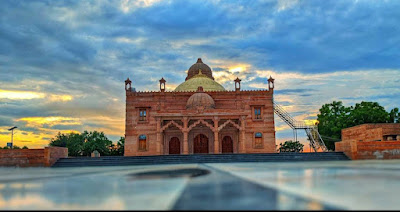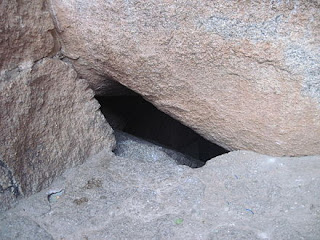Kamala Sohonie
She charted new paths for women in science
Kamala Sohonie (18 June 1912 - 28 June 1998) was the first Indian woman to obtain a PhD in any subject of science. She was a biochemist who received her PhD in 1939, for her study of the effects of vitamins and the nutritive values of pulses, paddy, and groups of food items consumed by some of India’s poorest citizens. Her study of the nutritive value of the palm extract Neera that she conducted on the suggestion of President Rajendra Prasad was pathbreaking. She received the Rashtrapati Award for her pioneering work.
Source: Wikipedia
Early career stumbling blocks
Kamala Sohonie née Bhagvat was born in Indore in 1912. Her father and uncle were chemists and alumni of the Tata Institute of Sciences (later Indian Institute of Science) in Bengaluru. Inspite of encouragement at home to pursue her interest in science, all was not smooth sailing for Kamala Sohonie in her professional life inspite of her proven competence. At every step she came up against male prejudice and hidebound attitudes against women working in almost completely male environments . Yet, and this is the lesson we need to take away since these attitudes persist even today, she did not let that stop her. She found ways to sidestep and continue on her way to her goal. Nothing at work was handed to her as easily as it was to her male colleagues, and it might be argued that she had to expend energy on managing these unfair circumstances but my guess is that these roadblocks only served to make her more determined.
Facing gender prejudice… and winning
Kamala graduated in 1933 from Bombay University with Bachelor degrees in Chemistry and Physics. When she applied to the Indian Institute of Science at Bengaluru for a fellowship, Kamala was turned down by the then director and Nobel laureate Sir CV Raman despite her topping the university merit list. His reason was that she was unqualified due to her gender, that she was not competent to pursue research due to being a woman. Kamala’s response was a satyagraha outside Raman’s office, which caused him to change his mind subject to conditions - that she would be on probation until he was convinced of her merit and that she must ensure her presence would not disturb the male researchers. Kamala later recounted this period of her life at a meeting at the Indian Women Scientists’ Association - “Though Raman was a great scientist, he was very narrow-minded. I can never forget the way he treated me just because I was a woman. Even then, Raman didn’t admit me as a regular student. This was a great insult to me. The bias against women was so bad at that time. What can one expect if even a Nobel Laureate behaves in such a way?”
Kamala’s exemplary work ethic forced Raman to change his stance a year later, and she was allowed to continue as a regular researcher in biochemistry. What is more, due to her conduct and merit Kamala was the reason for the portals of the IISc being opened to women henceforth. It must have gladdened her that her fight was fruitful and led to more opportunities for deserving women candidates where none had existed earlier.
Kamala’s mentor and teacher at IISc, Sri Srinivasayya encouraged her to spread her wings. He pushed her to read the works of masters in biochemistry and even correspond with them. At IISc her work was on proteins in milk, pulses and legumes - all important for combating malnutrition in India at the time. She was the first researcher, only a graduate student then, to work in the field of pulse protein. This resulted in her obtaining an MSc from the University of Bombay.
Research and a PhD in Science from Cambridge University
Kamala then left for Cambridge where she worked in the lab of Dr. Robin Hill on plant tissue. While working on potatoes she found that every cell of a plant tissue contained the enzyme ‘cytochrome C’ which was involved in the oxidation of all plant cells. This was an original discovery which embraced the entire plant kingdom. She sent a short thesis on her discovery to Cambridge University for her PhD - the research and writing took 14 months, all encapsulated in 40 pages.
She was the first Indian woman to get a PhD in science.
Soon she received two scholarships. One was at Cambridge University with Nobel Laureate Prof. Fredrick Hopkins with whom she worked in the areas of biological oxidation and reduction. The second was an US travelling scholarship which enabled her to meet scientists in Europe.
A career in India
After she returned to India in 1939 she became head at the Department of Biochemistry at the Lady Hardinge College, New Delhi. Later she became the Assistant Director of the Nutrition Research Laboratory, Coonoor which was when she researched the effect of vitamins. In 1947 she moved to Bombay after marriage.
There she joined the newly opened Department of Biochemistry at the Royal Institute of Science. This is where she researched three major food groups consumed by India’s rural poor in order to establish their nutritive values. These studies involved several products -
leguminous proteins, trypsin inhibitors and other compounds which reduce the digestibility of Indian legumes,
Neera, palm gur and palm molasses,
dhanata paddy flour which is formed during milling and polishing rice.
Extensive study on Neera and nutrition for tribal women and children
She worked on the nutritive qualities of Neera, a popular drink in the southern states, Odisha, Maharashtra and Gujarat. Neera is also known as palm nectar, and is the fresh extract of the flowers of the toddy palm. It is white and translucent. Within a few hours of extraction it ferments and is then known as toddy. Introduction of Neera on a regular basis in the diets of pregnant tribal women and adolescents in these areas showed a remarkable improvement in their general health. Kamala had several batches of her students study the nutritional effects of Neera on tribal women over 10 to 12 years with samples of Neera taken from all over the country. The study showed the same results throughout and verified Neera as a good nutritional input.
Later career in consumer safety
Kamala Sohonie was also a consultant at the Aarey Milk Dairy. She was active at the Consumer Guidance Society of India (CGSI). In 1982-83 she was elected their president. She also wrote for their publication Keemat on consumer safety. Even after all her professional achievements, Kamala Sohonie had to endure being denied directorship at CGSI for four years. When she finally became director, it was welcomed wholeheartedly by all who knew her work.
She always attributed her successes to three important men in her life - her father, her teacher and her husband. When Dr. Satyavathi, first woman Director-General at the Indian Council of Medical Research (ICMR), India’s apex body for biomedical research, came to know of Dr. Sohonie’s struggles she felicitated the then 84-year old at a grand ceremony. The irony of Kamala Sohonie’s life is that she collapsed at the ceremony and passed away soon after.
Gender politics and the careers of women in science
Kamala Sohonie prevailed and succeeded in her chosen path inspite of numerous obstacles at every turn. It is an indication of her will power and the support she had which resulted in the successes in her career that she could enjoy at long last.
The passage of time has not made it easier for women to achieve professional success despite their gender. Old fashioned chauvinistic attitudes still prevail, the improvement being they are not as prevalent as earlier and some avenues now exist to call them out. There is, however, a long way to go before gender parity is achieved. It is thanks to pioneering women such as Kamala Sohonie who broke a few glass ceilings that the disparity is now being acknowledged and partly redressed.
Reference -
1. https://www.ias.ac.in/public/Resources/Initiatives/Women_in_Science/Contributors/kamalasohonie.pdf
2. https://en.wikipedia.org/wiki/Kamala_Sohonie







